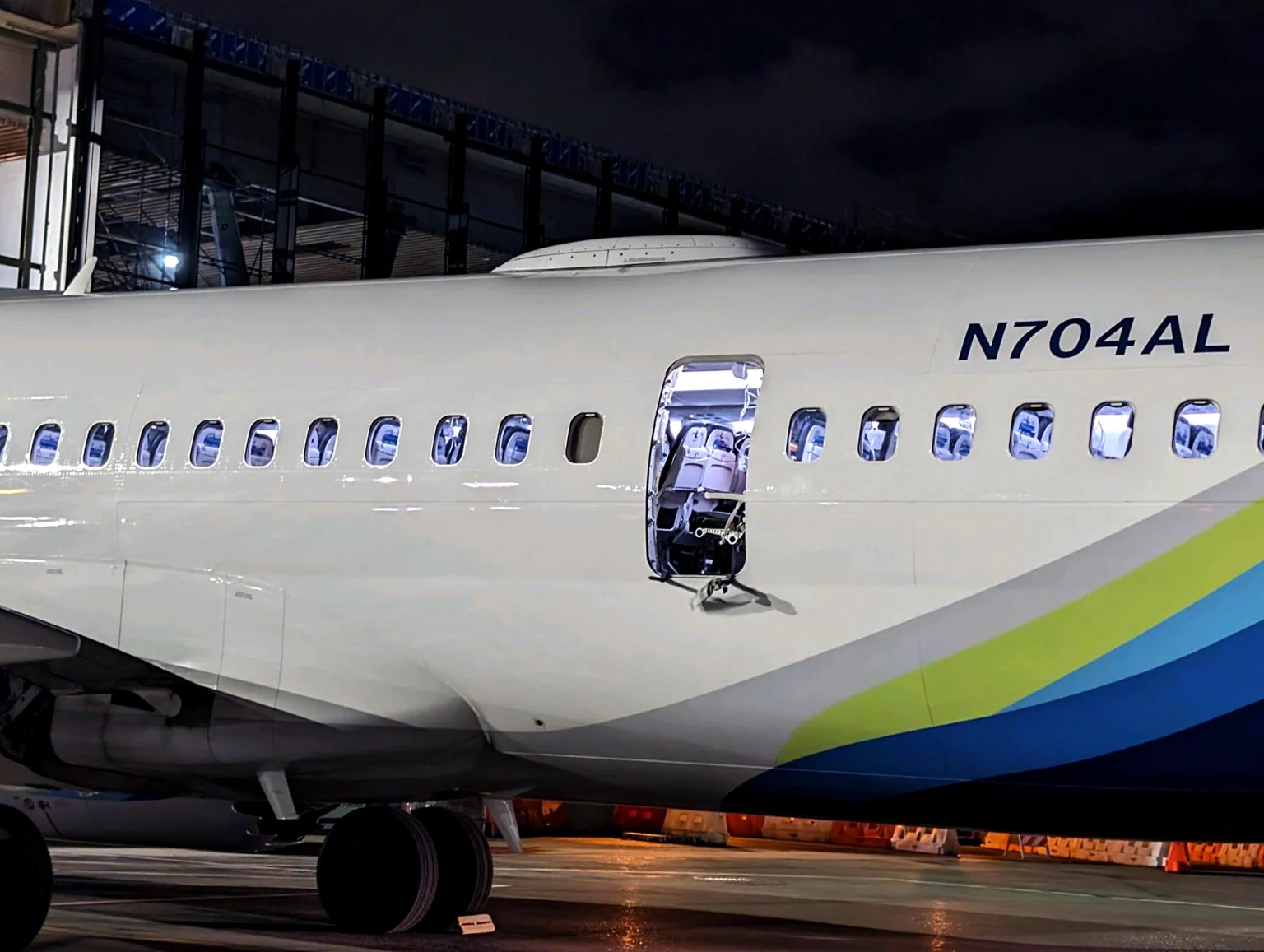On Monday, Alaska Airlines said that it found “loose hardware” on some 737 MAX 9 planes during preliminary inspections following last week’s mid-flight incident, quoting a similar announcement earlier in the day by United Airlines.
Alaska said technicians discovered the loose hardware “visible on some aircraft” during preliminary inspections after one of its jets was pushed to make an emergency landing last Friday in Portland, Oregon when a part of the fuselage broke off.
The recent disclosures come as US federal transportation inspectors continued to probe what caused a so-called door plug component to blow out last Friday on an Alaska Airlines passenger plane, forcing it to make an emergency landing.
United said Monday it had “found instances that appear to relate to installation issues in the door plug — for example, bolts that needed additional tightening.”
Hours later, Alaska Airlines announced its staff had found that “loose hardware was visible on some aircraft.”
Boeing shares tumbled Monday as investors began to assess the financial implications of the incident, while US aviation authorities provided airlines with protocols to check planes with similar configurations to the 737 MAX 9 aircraft involved in Friday’s incident.
Hundreds of flights have been canceled due to the grounding of a fraction of the MAX fleet.
“As operators conduct the required inspections, we are staying in close contact with them and will help address any and all findings,” Boeing said late Monday.
“We are committed to ensuring every Boeing airplane meets design specifications and the highest safety and quality standards. We regret the impact this has had on our customers and their passengers.”

Aviation analysts said the issue appeared to be a quality control problem rather than a design issue akin to the problem with a flawed flight handling system involved in two fatal MAX crashes in 2018 and 2019.
However, Boeing has struggled with supply chain and quality control problems since the MAX returned to service, limiting its output and hitting its bottom line.
In December, Boeing urged airlines to undertake additional inspections to check for loose hardware on plane rudder control systems after an international operator discovered a bolt with a missing nut while performing routine maintenance.




